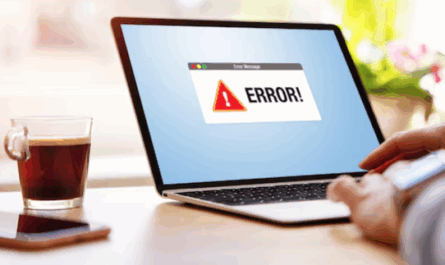A subsidy loan meaning is simple to understand. It is a financial mechanism where the government or another entity offers financial assistance to reduce the cost of borrowing for eligible individuals or businesses. The primary aim to understand loan subsidized meaning is to make essential financial resources more accessible and affordable, thus promoting socio-economic development.
This blog will delve into what is subsidy in loan, their types, and the application process.
Finding a loan to be too expensive? Apply for your next instant personal loan from Airtel Finance and get low interest rates, submit just a handful of documents and get instant loan approval, via the Airtel Thanks app. Get the app and apply today!
What is a Loan Subsidy?
A loan subsidy involves financial aid where a portion of the loan interest or principal is paid by the government or another institution to lower the cost for the borrower. This makes loans more affordable, particularly for low-income individuals, farmers, small businesses, and students. By reducing the financial burden on the borrower, loan subsidies help achieve broader policy objectives, such as promoting education, agricultural development, and entrepreneurship.
Read more: How long does it take to improve credit score?
Types of Loan Subsidies
Loan subsidies can be categorized based on the sector they target and the nature of the subsidy provided. Here are some common types of loan subsidies in India:
1. Education Loan Subsidies
Educational loan subsidies aim to make higher education more accessible to students from economically weaker sections. The government pays the interest during the moratorium period, which includes the course duration plus a certain period after the completion of the course.
Example: The Central Sector Interest Subsidy Scheme (CSIS) provides interest subsidies on education loans for students from families with an annual income of up to ₹4.5 lakh.
2. Agricultural Loan Subsidies
Agricultural loan subsidies are designed to support farmers by making credit more affordable. These subsidies typically cover a portion of the interest, making it easier for farmers to invest in crop production, purchase equipment, and manage other farming-related expenses.
Example: The Kisan Credit Card (KCC) scheme offers interest subsidies to farmers, providing credit at subsidized interest rates for crop production and other agricultural activities.
3. Housing Loan Subsidies
Housing loan subsidies aim to make homeownership more affordable for low and middle-income families. These subsidies reduce the effective interest rate on home loans, making it easier for individuals to buy or construct their homes.
Example: The Pradhan Mantri Awas Yojana (PMAY) provides interest subsidies on home loans for eligible beneficiaries under its Credit Linked Subsidy Scheme (CLSS).
4. Small Business Loan Subsidies
Small business loan subsidies are designed to support entrepreneurs and small businesses by making credit more accessible and affordable. These subsidies can cover a portion of the interest or provide grants to reduce the loan principal.
Example: The Prime Minister’s Employment Generation Programme (PMEGP) offers subsidies to micro, small, and medium enterprises (MSMEs) to promote entrepreneurship and job creation.
Read more: How to maintain a healthy CIBIL score?
How to Apply for a Loan Subsidy
If you’re wondering what is loan subsidy and how to apply for one, here’s a general process that applies to most loan subsidy programs in India:
1. Research and Identify Eligibility
-
Understand the Scheme: Research various loan subsidy schemes to identify the ones you are eligible for. Each scheme has specific criteria based on income, sector, and purpose of the loan.
-
Check Eligibility: Ensure you meet the eligibility criteria, which may include income limits, residency requirements, and specific conditions related to the purpose of the loan.
2. Gather Required Documents
-
Personal Identification: Documents such as Aadhar card, PAN card, and voter ID.
-
Income Proof: Income certificates, salary slips, or bank statements.
-
Loan-Related Documents: Loan application forms, sanction letters from banks, and any other documents specified by the subsidy scheme.
3. Apply for the Loan
-
Visit the Bank or Financial Institution: Approach the bank or financial institution that offers the subsidized loan under the specific scheme. Ensure the institution is a recognized partner of the subsidy program.
-
Submit the Application: Fill out the loan application form and submit it along with the required documents. Ensure that you clearly indicate your intention to apply for the subsidy.
4. Application for Subsidy
-
Specific Subsidy Forms: Some schemes may require additional forms or applications to be filled out specifically for the subsidy.
-
Submit Required Documents: Provide all necessary documents as required by the subsidy scheme. This might include proof of eligibility for loans, income certificates, and sanction letters from the bank.
5. Verification and Approval
-
Verification Process: The bank and the relevant subsidy granting authority will verify your application and documents.
-
Approval and Disbursement: Once verified and approved, the subsidy amount is credited to your loan account, effectively reducing your loan burden.
Read more: AI in loan assessment – how does it work?
Key Considerations
Now that you have understood what is subsidy loan, let us understand some key considerations. While applying for a loan subsidy, consider the following:
-
Timely Application: Apply for a loan as soon as you qualify to avoid missing out on benefits, as many subsidy schemes have limited funds or deadlines.
-
Accurate Information: Ensure all information provided is accurate and truthful to avoid delays or rejections.
-
Understand Terms and Conditions: Familiarize yourself with the terms and conditions of the subsidy to fully benefit from it.
Loan subsidies play a crucial role in making credit more accessible and affordable for various segments of society in India. Whether it’s a student aiming for higher education, a farmer needing support for crop production, a family aspiring to own a home or an entrepreneur looking to start a business, loan subsidies offer a valuable opportunity to reduce financial burdens and promote overall socio-economic development.
FAQs
-
What is a Loan Subsidy?
A Loan Subsidy meaning entails financial assistance provided by a government or organization to reduce the cost of borrowing for specific purposes, such as education, housing, or business development.
-
What are the types of Loan Subsidies?
Types include interest subsidies where a portion of the interest is paid by the subsidy provider, principal subsidies reducing the loan amount, and combination subsidies covering both interest and principal.
-
How do I apply for a Loan Subsidy?
To apply, check the eligibility criteria set by the subsidy provider, gather the required documents for loan, and apply to designated channels such as government agencies, banks, or nonprofit organizations.
-
Who benefits from Loan Subsidies?
Loan Subsidies benefit borrowers by lowering borrowing costs, making loans more affordable and accessible for education, housing, or business purposes, especially for individuals with financial needs.



